When Video Call users run a pre-call test, the system runs a short series of tests to check that your device is able to conduct a successful video consultation.
Should you be alerted to any issues in the pre-call test results, click on the relevant section below for help:
 Web Browser
Web Browser
Ensure that you are using a recent version of one of the following web browsers:
Google Chrome (Windows, Android, MacOS, iOS v14.3+)
Apple Safari (MacOS, iOS)
Firefox (Windows, Android, iOS v14.3+)
Microsoft Edge (Windows MacOS, iOS v14.3+, Android)
How do I know if I have the latest browser version?
|
Check what version of browser you are using: https://www.whatismybrowser.com This website displays the name and version of the web browser you are currently using and lets you know if it is up to date. |
 |
 Camera test
Camera test
Please see below for information and advice if you are alerted to any camera issues.
- If you are using an external camera, for example a USB camera not inbuilt in your computer, check that it is plugged in correctly. You can try disconnecting and reconnecting the camera as this can force your computer or device to recognise it.
- Ensure there is no other software such as Skype or a video conferencing client running on your device and using your camera. It is best to quit all these other applications when you are using Video Call.
Ensure your camera is working if it is in-built in your Windows PC/Mac/mobile device:
Using a Windows PC
| On a Windows PC go to Search in your task bar and type ‘Camera’. The camera app will open and you will see your camera image – you can switch cameras if you have more than one available. Make sure you can see yourself. |
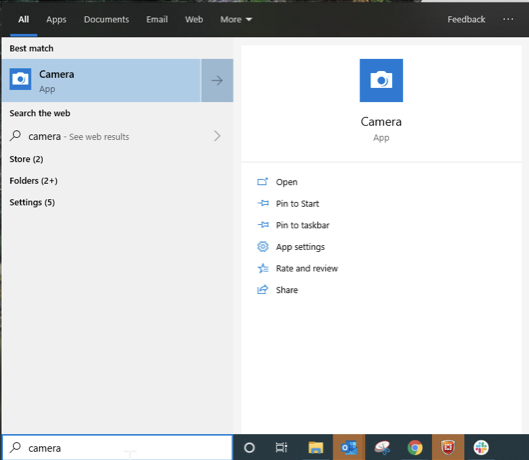 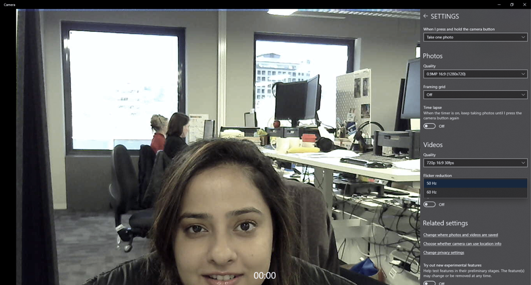
|
Using a Mac
| On a Mac open the Photo Booth application and make sure you can see yourself. |
 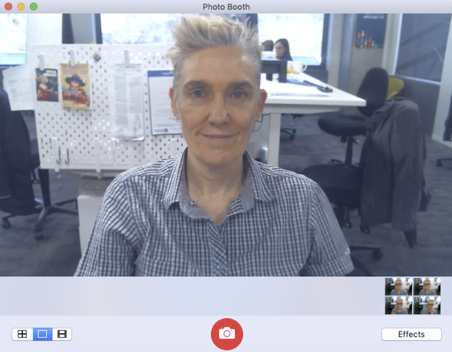
|
Using a mobile device
Open your camera app and ensure you can take a photo. You can use your front camera (the one you take 'selfies' with) to make sure you can see yourself.
You can also select your camera and ensure it isn't blocked for our website from your Chrome browser settings:
Using a Windows PC
|
1. In a Google Chrome browser, open a new tab. In the address bar, enter chrome://settings/content/camera Google Chrome's Camera settings page opens.
|
 |
|
2. Select the camera you want as your default from the drop-down list if you have more than one and ensure https://vcc.healthdirect.org.au is allowed. If it is under 'Block' please remove it from that section by clicking on the trash icon. |
 |
Using a Mac
| 1. In a Google Chrome browser, Click on settings and go to Site Settings under Privacy and Security. Alternatively type in ‘Site settings’ in the search bar to navigate to it. |
 |
| 2. Open site settings and click on Camera. |
 |
| 3. Select the camera you want as your default from the drop-down list if you have more than one and ensure https://vcc.healthdirect.org.au is allowed. If it is under 'Block' please remove it from that section by clicking on the trash icon. |
 |
Using an iOS device (iPhone and iPad)
| On an iOS (iPhone or iPad), camera access is controlled from the device's 'Settings' application. If using Safari, open 'Settings' then find 'Safari' and scroll down to 'Setting For Websites'. Click on Allow for both camera and microphone access and use Safari for your Video Call. |
 |
Using an Android device
|
In Google Chrome on an Android mobile device you can click the little menu on the right of the URL bar (the three dot points) and go to Settings. Click on "Site Settings" - and then choose Microphone. Make sure the Microphone is allowed - you can select 'Ask first'. If you find the Healthdirect Waiting Area URL in the blocked section, click on it remove it from that section.
|
 |
 Microphone test
Microphone test
Please see below for information and advice if you are alerted to any microphone issues.
- If you are using an external microphone, for example a USB microphone, check that it is plugged in correctly. You can try disconnecting and reconnecting the microphone as this can force your computer or device to recognise it.
- Ensure your microphone volume is set adequately, especially if you have volume control on your external headset.
- Ensure, there is no other software such as Skype or a video conferencing client open on your device and using your microphone. It is best to quit all other applications that access your microphone and camera when you are using Video Call.
- If you have a USB echo-cancelling combined microphone/speaker unit, make sure it is selected for use as both the microphone and speaker.
To check you have the correct input (microphone) selected, go to your Sound settings:
Using a Windows PC
|
Go to Search in your task bar and type in Sound. Navigate to the sound input settings. Select the desired microphone if you have more than one available. |
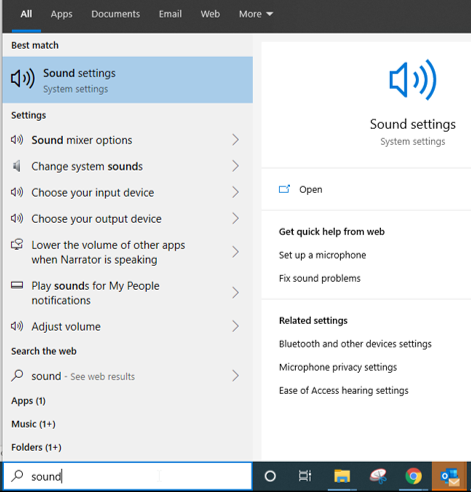 |
Using a Mac
|
Go to System Preferences, click on Sound and check the device selected under Input. Change if required. |
 |
- You can also select your microphone and ensure it is allowed, from your browser settings:
Using a Windows PC
|
1. In a Google Chrome browser, open a new tab. In the address bar, enter chrome://settings/content/microphone. Google Chrome's Microphone settings page opens. |
 |
| 3. Select the microphone you want as your default from the drop-down list. |  |
Using a Mac
|
1. In a Google Chrome browser, Click on settings and go to Site Settings under Privacy and Security.
|
 |
|
2. Open site settings and click on Microphone
|
 |
| 3. Select the microphone you want to use from the drop-down list. |  |
Using an iOS device (iPhone and iPad)
| On an iOS (iPhone or iPad), camera access is controlled from the device's 'Settings' application. If using Safari, open 'Settings' then find 'Safari' and scroll down to 'Setting For Websites'. Click on Allow for both camera and microphone access and use Safari for |
 |
Using an Android device
|
In Google Chrome on an Android mobile device you can click the little menu on the right of the URL bar (the three dot points) and go to Settings. Click on "Site Settings" - and then choose Microphone. Make sure the Microphone is allowed - you can select 'Ask first'. If you find the Healthdirect Waiting Area URL in the blocked section, click on it remove it from that section.
|
 |
 Connection test
Connection test
Video Call is designed to work in as many different corporate or institutional networks as possible, with little to no special network configuration required.
Each Video Call Management Console user's device must have access to the Internet via secure port 443. This is the same access requirement as for other secure internet websites.
For Video Call to be optimised, network access must be allowed to vcct.healthdirect.org.au via port 3478 using UDP protocol. TCP protocol will often work but may cause issues so please have your IT department or Webmaster allow UDP using the information in the table below.
Please Note: If either UDP or TCP are ticked you will have access to video call (you don't need both).
A good broadband connection is required - minimum speed is 350Kbps upstream and downstream for Video Call.
Test your speed here: https://www.speedtest.net/
If using your mobile phone or tablet, a good 3G/4G mobile signal should be adequate for Video Call.
If you are having connection issues or errors in the precall test there are a few things you can check:
Behind a proxy or firewall
Video Call uses a technology known as WebSockets for our call orchestration. While a standard, and highly prevalent web technology, some network architectures include proxies and/or firewalls that can block the necessary connection upgrades required for WebSockets to work, and result in an inability to connect to our Video Call infrastructure.
|
You may be attempting to make a Video Call from a large health/corporate organisation or hospital network. Check with your IT department that the network rules are maintained as below:
An alternative solution is to use another network - such as a 4G phone/mobile broadband connection to connect to your call.
|
Interference from Antivirus SoftwareSimilar to the above section, some Antivirus software can interfere with the establishment of a WebSockets connection.
|
If you are experiencing interference from your Antivirus Software, you may be able to add an exception for videocall sites (https://*. vcc.healthdirect.org.au) for your Antivirus to allow WebSockets to work. If you are within a corporate network, this may require the assistance of your network administrator.
|
Interference from a VPNIf you have a company provided laptop or desktop computer that has VPN capability, it may cause issues connecting with healthdirect Video Call. You may get a message saying 'this website is unavailable'. |
First try to complete a precall test with your VPN disconnected. If you are unable to connect to the precall test page, please ensure your IT Team whitelists the following addresses on the Proxy Server: *vcc.healthdirect.org.au* *vcc2.healthdirect.org.au* For many VPN connections, allowing NAT egress to UDP port 3478 on the relay server (vcct.healthdirect.org.au) will also be required. |
|
Reflexive candidate issues Reflexive candidates are obtained when the computer is behind NAT (Network address translation) and obtains a public internet facing IP address by sending requests to the STUN/TURN server. In this example the user is not able to connect using reflexive candidate but can connect using relay candidate and both TCP and UDP are enabled so they would be able to participate in a Video Call. Please note: As long as at least one connectivity method is available you should be able to complete a Video call. If all three connectivity options are blocked please contact your local IT support. |
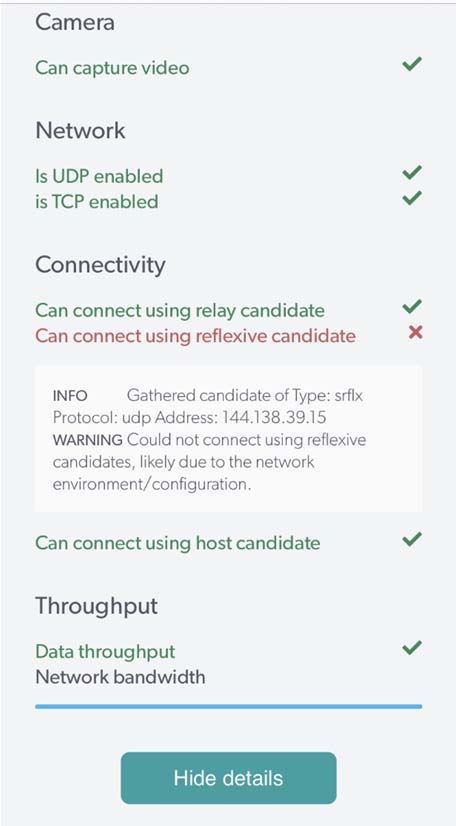
|
If the troubleshooting steps above do not solve your issues please contact your local Telehealth support and they will assist and escalate further if required.